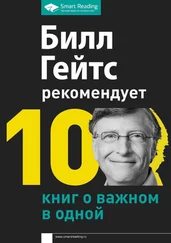I was also reminded that no country is fully prepared for the next war. Secretary Rumsfeld said you go to war with the army you have. But the Defense Department was unconscionably slow in identifying and providing the equipment to make the Army and Marine Corps into the force we needed in Afghanistan and Iraq. That slowness, that business-as-usual peacetime mentality, cost lives.
Usually we don’t get to choose and almost never accurately predict the kind of war we will fight next. I am always amused when I hear a senior military officer or a politician declare that we will never fight certain kinds of wars again. After Vietnam, our defense “experts” avowed we would never again try to fight an insurgency, yet we have done so in both Iraq and Afghanistan. We are hearing the same claim now. Those who assert we will fight only certain kinds of wars in the future forget history and the reality that our enemies, as I’ve said, always have a vote, as do future presidents. In the forty years since Vietnam, our record in predicting where we will be militarily engaged next, even six months out, is perfect: we have never once gotten it right, not in Grenada, Haiti, Panama, Libya (twice), Iraq (twice), Afghanistan, the Balkans, or Somalia. When it comes to predicting future conflicts, what kind of fights they will be, and what will be needed, we need a lot more humility.
Wars are a lot easier to get into than out of, a point I hope I have made clear. Those who ask about exit strategies or what happens if assumptions prove wrong are rarely welcome at the conference table when the fire-breathers argue we must act militarily—as they did when advocating an invasion of Iraq, intervening in Libya and Syria, or bombing Iranian nuclear sites. The argument against military action is almost never about capabilities but whether it is wise. As Petraeus said early on in Iraq, “Tell me how this ends.” Too often the question is not even asked, much less answered.
My time as secretary of defense reinforced my belief that in recent decades, American presidents, confronted with a tough problem abroad, have too often been too quick to reach for a gun—to use military force, despite all the realities I have been describing. They could have done worse than to follow the example of President Dwight D. Eisenhower. During his presidency, the Soviet Union became a thermonuclear power, China became a nuclear power, and there were calls for preventive nuclear war against both; the Joint Chiefs unanimously recommended that he use nuclear weapons to help the French in Vietnam; there were several crises with China related to Taiwan; a war in the Middle East; a revolution in Cuba; and uprisings in East Germany, Poland, and Hungary. And yet after Eisenhower agreed to the armistice in Korea in the summer of 1953, not one American soldier was killed in action during his presidency.
Too many ideologues call for the use of the American military as the first option rather than a last resort to address problems. On the left, we hear about the “responsibility to protect” as a justification for military intervention in Libya, Syria, the Sudan, and elsewhere. On the right, the failure to use military force in Libya, Syria, or Iran is deemed an abdication of American leadership and a symptom of a “soft” foreign policy. Obama’s “pivot” to Asia was framed almost entirely in military terms as opposed to economic and political priorities. And so the rest of the world sees America, above all else, as a militaristic country too quick to launch planes, cruise missiles, and armed drones deep into sovereign countries or ungoverned spaces.
I strongly believe America must continue to fulfill its global responsibilities. We are the “indispensable nation,” and few international problems can be addressed successfully without our leadership. But we also need to better appreciate that there are limits to what the United States—still by far the strongest and greatest nation on earth—can do in an often cruel and challenging world. The power of our military’s global reach has been an indispensable contributor to peace and stability in many regions and must remain so. But not every outrage, every act of aggression, every oppression, or every crisis can or should elicit an American military response.
I wrote in my first book in 1996 that, contrary to conventional wisdom, the biggest doves in Washington wear uniforms. This is because our military leaders have seen the cost of war and its unpredictability, and they have too often sent their troops in harm’s way to execute ill-defined or unrealistic presidential objectives, with thin political support that evaporated when the going got tough or the fight became prolonged. Just as it did in “the necessary war” in Afghanistan.
There is one final lesson about war that we too often forget. We are enamored of technology and what it can do because of advances in precision, sensors, information, and satellite technology. A button is pushed in Nevada, and seconds later a pickup truck explodes in Mosul. A bomb destroys the targeted house on the right, leaving intact the one on the left. War has become for too many—among them defense “experts,” members of Congress, executive branch officials, and the American public as well—a kind of arcade video game or action movie, bloodless, painless, and odorless. But as I told a military audience at the National Defense University in September 2008, war is “inevitably tragic, inefficient, and uncertain.” I warned them to be skeptical of systems analysis, computer models, game theories, or doctrines that suggest otherwise. “Look askance,” I said, “at idealized, triumphalist, or ethnocentric notions of future conflict that aspire to upend the immutable principles of war, where the enemy is killed, but our troops and innocent civilians are spared; where adversaries can be cowed, shocked, or awed into submission, instead of being tracked down, hilltop by hilltop, house by house, block by bloody block.” I quoted General William T. Sherman that “every attempt to make war easy and safe will result in humiliation and disaster.” And I concluded with General “Vinegar Joe” Stilwell’s warning that “no matter how a war starts, it ends in mud. It has to be slugged out—there are no trick solutions or cheap shortcuts.”
We must always be prepared and willing to use our military forces when our security, our vital interests, or those of our allies are threatened or attacked. But I believe the use of military force should always be a last resort and our objectives clearly and realistically defined (as in the Gulf War). And presidents need to be more willing and skillful in using tools in the national security kit other than hammers. Our foreign and national security policy has become too militarized, the use of force too easy for presidents.
THE TROOPS
Most of the public attention with regard to men and women in uniform seems to fall to one end of the spectrum or the other—the heroes are extolled for their valor and sacrifice, and those who have disgraced the uniform in some way are condemned. The latter, fortunately, are small in number. The former, the heroes, to me are countless. I know that if everyone is a hero, then no one truly is. I concede the term is thrown around far too casually. Most troops signed up in a time of war and did their job ably and honorably, without fanfare or much recognition. There is no doubt that those who fought bravely, those who saved the lives of their comrades often at the risk of their own, those who were wounded, and those who fell are all heroes. But how, then, to describe the hundreds of thousands who went to Iraq and Afghanistan, did their duty, then returned to their families and must live with the nightmare of war for the rest of their lives? What about the medics, doctors, and nurses who have had to deal with so many shattered bodies and minds? Or the aircrews who have been at war since 1991? Or the logistics experts for whom performing miracles became a routine day’s work? Or the Special Forces among whom seven or eight or ten tours of duty were common? Or all those troops who had to endure fifteen-month tours? Wherever I went in the world, these men and women were standing watch for all of us. For some, it is a career; for all, it is a calling.
Читать дальше












